The only thing better than binge-watching your favorite SFF movies or TV series is reading a bunch of cool facts about them. Behind-the-scenes books about science fiction movies and TV shows are sometimes overlooked by fans, partially because so much nerdy information exists online. And yet, in the pages of great behind-the-scenes books, you’ll find things you really can’t find anywhere else. Even when you think you know something, there’s always another detail in a behind-the-scenes book that will be missing from Wikipedia, or, paradoxically, articles like this one.
Here are five behind-the-scenes books about SFF movies and TV that offer revelatory details about some great franchises. From Babylon 5 to Blade Runner, to one thing you almost certainly got wrong about the original Star Wars, let’s raid the bookshelf to make your next sci-fi binge even better.
The star of Forbidden Planet threw shade at Stanely Kubrik for 2001: A Space Odyssey
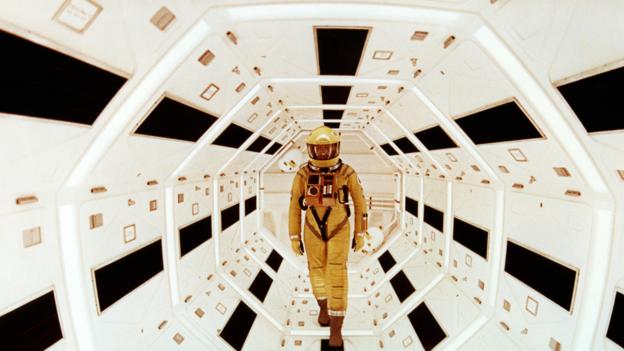
It’s hard to imagine a cinematic science fiction world before 1969’s 2001: A Space Odyssey, but prior to that film, mainstream science fiction movies that also were big box office hits, basically didn’t exist. MGM, the studio that produced 2001: A Space Odyssey, had had one other big outer space movie beforehand: 1956’s Forbidden Planet. (If you haven’t seen Forbidden Planet in a while, don’t bother. It looks beautiful, but it’s pretty impossible to get past the horrific sexism.)
Anyway, the star of Forbidden Planet was Leslie Neilson, known better for his later comic roles in Airplane! and The Naked Gun. But apparently, Neilsen was suspicious of 2001, and randomly accosted Stanley Kubrik about the movie. According to the book The Making of 2001: A Space Odyssey, partially written by Jay Cocks and edited by Martin Scorsese, this confrontation went down in a Hollywood restaurant. Jay Cocks writes:
“…Stanley [was] listening attentively until a low theatrical voice from across the room interrupted us, calling out his name like a gunfighter challenging a rival.
‘Stanley Koo-brick…’Stanley looked up. ‘This town isn’t big enough for the both of us.'”
Cocks points out that Forbidden Planet had been the only other “large- scale sci-fi excursion” that MGM had attempted at that point, and Neilson was harassing him about that fact. Cocks writes that he sensed Kubrick wanted nothing to do with politics and jealously within Hollywood.
J. Michael Straczynski procrastinated about killing a major character in Babylon 5
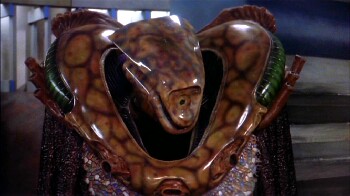
Spoiler alert, but throughout the five-season run of Babylon 5, a lot of characters die. Most hardcore fans are aware that various plot points of Babylon 5 were changed throughout its run for a variety of factors, the largest one being that the show was always in danger of cancellation. But, in season 3, one character death that Straczynski had planned since the start was that of the mysterious Vorlon Ambadassor Kosh. Paradoxically, it seems that Straczynski’s reluctance to actually kill Kosh off, actually made him kill the character off earlier rather than later. In the officially-licensed 5-book series on Babylon 5, the season 3 volume, Point of No Return by Jane Killick, explains how this happened. Here’s what JMS was thinking when Kosh was killed in “Interludes and Examinations.”
“I had not really been looking forward to offing Kosh… I had grown quite fond of him and when I began writing that episode, the character began poking the back of my head, saying, ‘No, do it now for the reason I just expressed,” and I said, ‘I don’t now—later, later is better. I don’t want to do this now.’ He said, “no you’ve got to do this now because this is the right time—you know this is the right time.'”
So yeah, JMS had a mind-fight with Kosh, and that led to him killing Kosh when he did, mostly because he was trying not to.
The reason Back to the Future II switched Jennifers is not remotely controversial
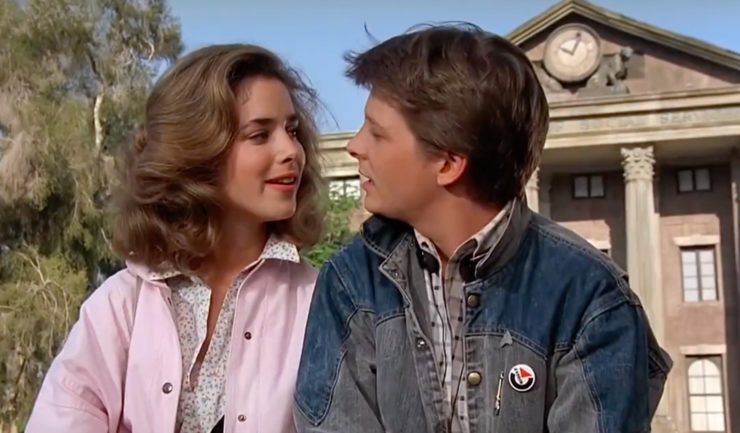
In the original Back to the Future, the role of Jennifer Parker is played by Claudia Wells, but in Back to the Future II and Back to the Future III, Jennifer is played by Elisabeth Shue. You might assume this is because Shue was a slightly more famous actress than Wells, but that wasn’t even a factor. Shue was hired to replace Claudia Wells while Wells was taking care of her sick mother. In We Don’t Need Roads: The Making of the Back to the Future Trilogy by Casseen Gaines, this fact is made 100-percent clear. Nobody wanted to see Claudia Wells go. Even Christopher Lloyd said: “Claudia Wells not coming back was very disappointing.” But her mother had cancer and she couldn’t commit to the movie. Wells herself describes it like this:
“I knew that I couldn’t do it at the point… There was so much going on at home. It’s such a stressful experience in the family dynamic to have your mom die. There was no choice for me.”
That said, to this day, Wells is all about celebrating her status as the original Jennifer. Elsewhere in Gaines’ book, you’ll learn that Wells is often visited by Back to the Future fans at her men’s fashion store, Armani Wells, in Studio City, California. And unlike Crispin Glover or Tom Wilson, Wells seems to genuinely enjoy talking about the fact that her kids (one son IRL), did not, in fact, turn into assholes.
Nobody wanted the Blade Runner voiceovers. Well, other than director Ridley Scott
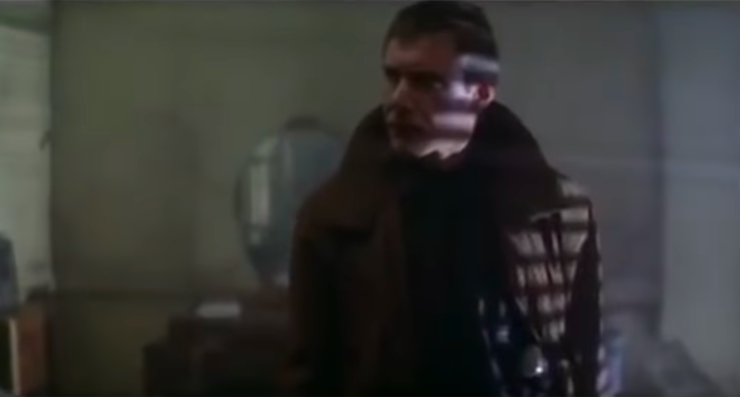
Among the many gripes that people have about the 1982 cyberpunk classic, Blade Runner, one of the most prevalent is that the studio-mandated voiceover narration from Harrison Ford “ruined” the movie. While it’s true that the studio did mandate a specific voiceover be used in the final theatrical release of the film, the idea of doing a voiceover in the first place actually comes from director Ridley Scott. In Future Noir: The Making of Blade Runner, Paul M. Sammon asserts that the noir-ish hardboiled detective narration for Deckard wasn’t a cheesy studio idea slapped on at the last second. Through various interviews, Sammon learned that “it was Scott who pressed for the narration in the first place.” Screenwriter Hampton Fancher (who also co-wrote Blade Runner 2049)corroborates this in the same book, saying: “[Ridley]Scott was after the feel of a ‘40s detective thriller, so he liked the idea of using this film-noir device.”
The problem was, Scott didn’t get to use the narration he wanted (there were actually three different versions recorded) and by the time he was editing the film, he decided he no longer wanted it at all. The studio-mandated voiceover (which Harrison Ford supposedly hated) was the one that was required, and the one nobody liked. But, in theory, if Scott had never wanted a voiceover in the first place, then the theatrical cut of Blade Runner may not have been saddled with one at all.
A crucial element about the inspiration for Chewbacca isn’t what you think it is.
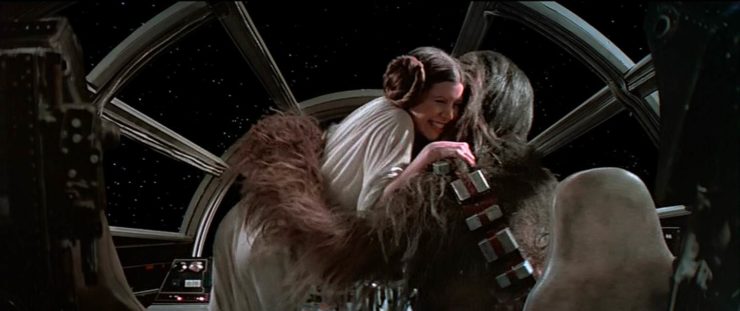
If you goggle “Chewbacca origin” or “Chewbacca inspiration,” you’ll find various versions of the following statement, like this one on Mental Floss: “The character of Chewbacca was inspired by George Lucas’s big, hairy Alaskan malamute, Indiana. According to Lucas, the dog would always sit in the passenger seat of his car like a copilot, and people would confuse the dog for an actual person.”
From Wikipedia to Wookieepedia (a website literally named after Chewbacca) this story is repeated in various ways, but the bottom line is: George Lucas’ dog sat with him in his car and was his co-pilot, and thus, Chewbacca was born in Lucas’ imagination.There’s just one problem. A very specific element of this origin story has been quietly erased from history: George Lucas’ first wife—and editor of A New Hope—Marcia Lucas. Yes, Chewbacca was actually inspired by George Lucas’ real-life dog, an Alkasain Husky Malamute named Indiana (he named the dog Indiana). But, the co-pilot aspect of Chewbacca actually comes from Marcia Lucas. She was the pilot to Indiana’s co-pilot, not George Lucas. It was her car, and she was the one driving next to Indiana, not George Lucas. And how do we know this? Because George Lucas said so!
In the book Once Upon a Galaxy: A Journal of Making The Empire Strikes Back by Alan Arnold (1980), in an interview Lucas puts it like this:
“Chewbacca was inspired by Indiana, my Alaskan Husky. My wife drives a little station wagon, and the dog sits in the front seat and is bigger than she is. Indiana is a huge black bear of a dog and as Marcia drives she has this big fuzzy dog looking like he’s the co-pilot.”
In the same interview, Lucas mentions that Indiana sat with him while he wrote various aspects of Star Wars, but people tend not to work on typewriters while driving. In more contemporary interviews, Lucas has subtly erased Marcia from this anecdote, saying “I had an Alaskan Malamute when I was writing the film. A very sweet dog, she would always sit next to me when I was writing. And when I’d drive around, she’d sit in the front seat.” This particular quote—found in The Vintage News—is pretty weird because it seems like Lucas also changed the gender of his dog from male to female.
So which thing do you believe? Once Upon a Galaxy was written by a publicist and journalist who worked on the set of Empire Strikes Back, and literally was the author of a book published and authorized by Lucasfilm in 1980. This was like the book version of Taylor Swift putting out her own documentary, Miss America. It’s not like Alan Arnold forced Lucas to admit to a new, twisted version of the Chewbacca origin story.
But in 1980, in the middle of the making of Empire, Lucas credited the inspiration for the character—and the comic size-difference between Chewie and a female co-pilot—to his first wife. When you think about Leia sitting next to Chewie in Empire or Rey piloting Millennium Falcon with Chewie in the sequel trilogy, this actually makes a lot of sense. Marcia Lucas’ work on editing and re-editing the first Star Wars is a fairly big deal, and pretty well-known among film historians. She accepted one the Oscars Star Wars won at the 1978 Academy Awards, but it seems like nobody has remembered to give her an award for helping to inspire Chewbacca.
Ryan Britt is a longtime contributor to Tor.com and the author of the book Luke Skywalker Can’t Read and Other Geeky Truths (Plume 2015.) His other writing and criticism have been published in Inverse, SyFy Wire, Vulture, Den of Geek!, the New York Times, and StarTrek.com. He is also an editor at Fatherly. Ryan lives with his wife and daughter in Portland, Maine where he teaches creative non-fiction for the Maine Writers and Publisher’s Alliance. He is represented by the Fischer-Harbage Literary Agency.










